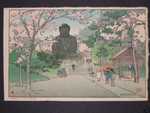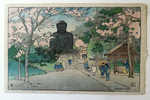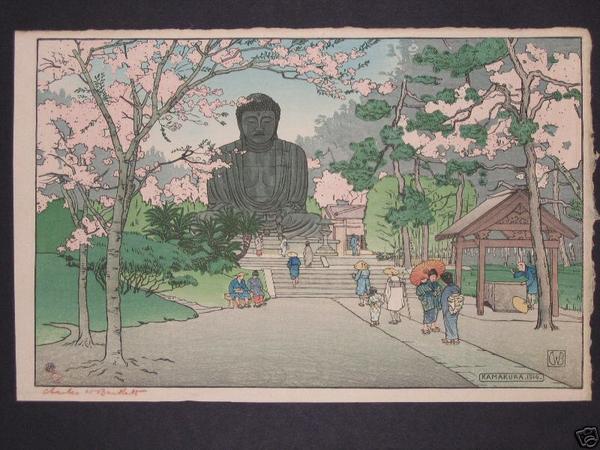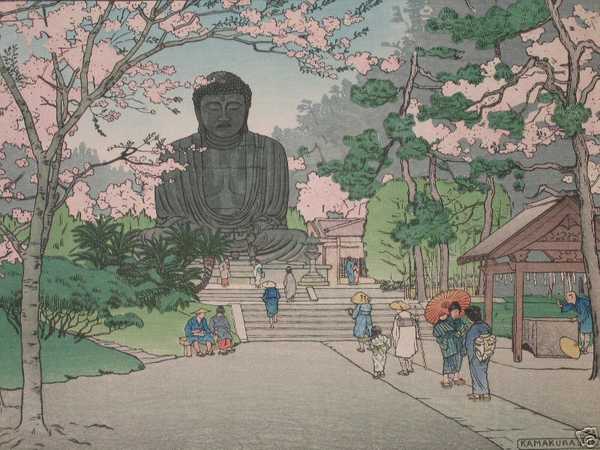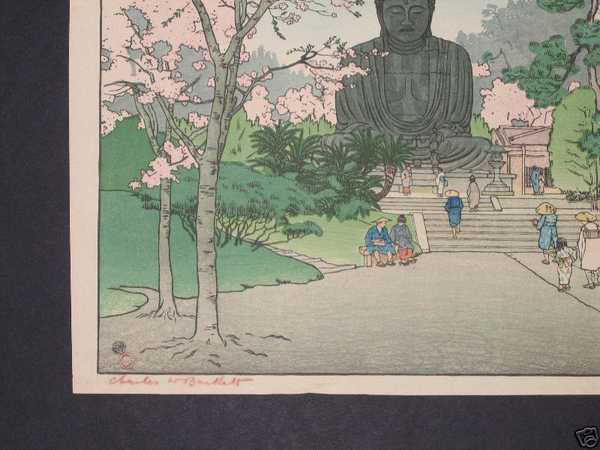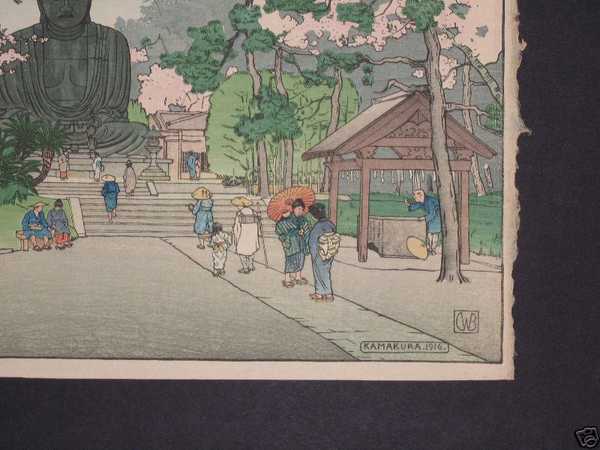| Notes (this edition)?: |
| The following information was taken from the original web listing of this artwork. Note that there may be some inaccuracies:
Japanese woodblock print, early Charles W. Bartlett. This is one of Bartlett’s best known prints, titled Kamakura. It dates from 1916. Signed in red pencil lower left; sealed with the artist’s CWB seal in the lower right hand corner of the image. It bears the correct Watanabe 6mm seal in the lower left portion of the image. I have rarely, if ever, seen this image in such nice shape. Typically, when you find this image, the greens have faded to blue and the pinks of the cherry blossoms have faded to white. That is not the case with this one; the pinks and greens are strong and clear throughout. There are a couple of tiny tape remnants in the reverse margin which do not show on the front at all. Also, there is a bit of adhesive residue in the very extreme upper reverse margin, well away from the image area, also not a problem in my estimation. |
|
| Artist Bio: |
Charles William Bartlett (1860-1940) was one of the first artists to work with the publisher Watanabe Shozaburo. Bartlett studied at the Royal Academy in London and at Academie Julian in Paris. Until his travels to Japan, Ceylon, Indonesia, and China in 1913, Bartlett worked primarily as a landscape and genre painter. In 1915 he met famous print publisher Watanabe, with whom he collaborated on the publication of a number of "shin hanga" style colour woodblock prints during the next decade, using Watanabe's studio to carve and create his own woodblocks. Bartlett designed 38 woodblock prints for Watanabe, beginning in 1916 and lasting through 1925. Twenty-two of these prints were produced within the first year, many with the date 1916 carved into the key block. The first series of prints consisted of six Indian scenes plus a cover print of the Taj Mahal. This was followed by a series of six Japanese scenes. Many of Bartlett's prints and etchings were scenes from his travels through Southeast Asia, China, and later Hawaii. After 1917, Bartlett settled in Hawaii where he remained for the rest of his life.
It is little known that in actual fact Bartlett commissioned Watanabe to publish his 38 scenes, rather than being an artist working for Watanabe, and from his base in Hawaii Bartlett held a very tight reign over Watanabe's production of each scene, requesting numerous fine colour changes for each scene. Because each of the scenes were commissioned and thus paid for by Bartlett , he maintained ownership of all the woodblocks, which were shipped back to Hawaii after each edition and are still kept in Hawaii even to this day.
|
|



